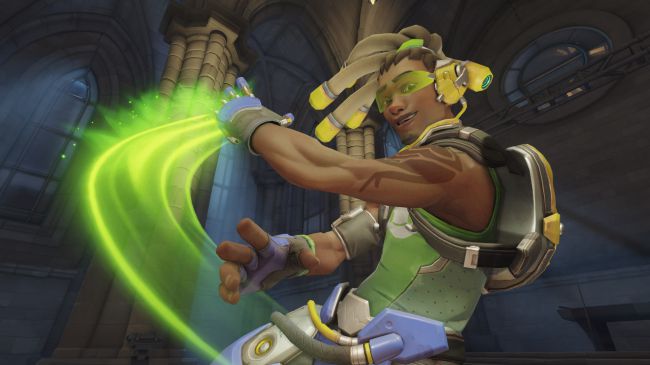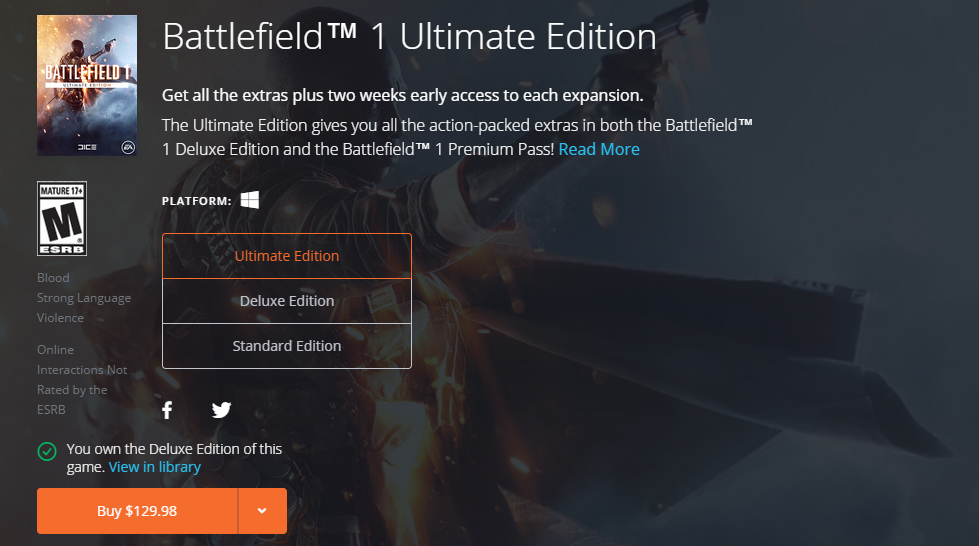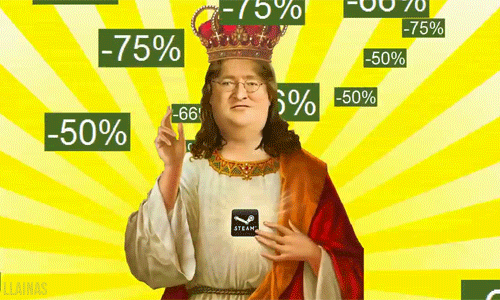How much should games cost?
A case for lowering the $60 standard.

Games today, at their listed retail prices, cost about the same as they did in 1995. In an order-by-phone ad from the October 1995 issue of PC Gamer US, software distributor Chips & Bits Inc advertises games in the $25 to $50 range. Adjusted for inflation with the Bureau of Labor Statistics’ CPI Inflation Calculator, that’s $40 to $80, not including shipping and handling. No difference, really, although today there are more high quality, low price games to choose from and bigger discounts during sales.
But if you’ve ever said that the big-budget PC games are more expensive than they used to be, you’re right in the short term. There has been an increase in the price of big releases between 2008 and 2016, when they went from $50 to $60, slightly outpacing inflation—GTA 4 at $50 was a slightly better value than GTA 5 at $60. That increase alone doesn’t tell the real story of PC game prices over the past 10 years, though. A massive gap has emerged between the least and most it’s possible to spend on the same game, and the shift from $50 to $60 shrouds a more complicated scheme which moves more of the cost to early adopters.
The gap
That’s a $457 difference between the most and least it was possible to spend on the same 11 games in 2016.
If we assume that $50 was the 'right' price in 2000, then after adjusting for inflation the base price of PC games today would be $70. Instead, it stuck at $60, and vast collections of digital stuff grew around that price, without many standards. One game’s $40 season pass is another’s $20 expansion, and one game’s ‘Ultimate Edition’ is another’s $2 rifle skin. And to keep us on our toes, each is always about go on sale.
To demonstrate, if you were to buy the 11 games we gave 2016 GOTY awards to (I’m excluding an expansion), without any discounts, your total would be $520. But if instead of buying the standard editions of these games, you splurge on ‘digital deluxe’ editions, season passes, and soundtracks, the total comes to about $745. That’s $225 worth of multiplayer maps, cars, gun skins, songs, and expansions—I didn’t include any edition that offered a physical reward. You could buy three more $60 games with that, and then another copy of Overwatch, and still have enough left for a sandwich (so long as you don’t live in San Francisco).
But if you again ignore all the special editions and DLC, and factor in the lowest price each game hit during sales, the total is about $288. That’s a $457 difference between the most and least it was possible to spend on the same 11 games in 2016.

On Steam, it only takes about 7 months for most popular big-budget games to be discounted by 50%. So less than a year after release, a $60 game will often become a $30 game during a sale. To compensate, that $30 has been moved onto early adopters.
Moving money
One example of that shift can be seen in the difference between Diablo 2 and Diablo 3.
Keep up to date with the most important stories and the best deals, as picked by the PC Gamer team.
- June 2000: Diablo 2 launches for $50.
- June 2001: Diablo 2 has been discounted to $40 and The Lord of Destruction expansion releases for $35. Those who bought Diablo 2 at launch and then the expansion at full price pay $85. Those who waited pay $75. Blizzard makes $10 more from early adopters.
- May 2012: Diablo 3 releases for $60.
- March 2014: Diablo 3 has been discounted to $20 and the Reaper of Souls expansion releases for $40. Those who bought Diablo 3 at launch and then the expansion at full price pay $100. Those who waited pay $60. Blizzard makes $40 more from early adopters.
When adjusted for inflation, Diablo 2 cost more in 2001 than Diablo 3 did in 2014, however you look at it. But what this demonstrates is a shift in how much value is put on playing on launch day. It was always more expensive to buy games at release, but today it’s even more expensive to buy in early and even cheaper to wait.

The past few years have also seen sales used as a way of sustaining the population of online multiplayer games. Rainbow Six Siege, bucking several trends, is currently $50—only $10 cheaper than when it released in December 2015. But Ubisoft has experimented twice with a Siege 'Starter Edition,' a $15 version of the game that gave customers access to the entire game, but not most of its characters, granting four of Siege's 28 operators at the outset. After the Starter Edition was available in June, Siege's average concurrent players increased 27%. When it was again available in October, Siege's concurrent players jumped again by 45%. Siege, like other blockbuster releases, is also supported by hundreds of dollars' worth of available cosmetic items, in-game currency, and season passes. Ubisoft revealed plans for a second season pass in November.
Over a third of the cost of Black Ops 3 was the privilege to play it first.
For another example of how costs have been heaved toward the biggest fans, here’s a comparison between the cost of Call of Duty 4: Modern Warfare at launch and Call of Duty: Infinite Warfare at launch.
Call of Duty 4: Modern Warfare (2008): $50
Collector’s Edition: $60, included a digital copy of the BradyGames Official Strategy Guide. Hopefully no one bought this.
Variety Map Pack DLC: Released free on PC, sponsored by Nvidia.
Call of Duty: Infinite Warfare (2016): $60
Digital Legacy Edition: $80, includes Call of Duty 4: Modern Warfare Remastered.
Digital Deluxe Edition: $100, includes Call of Duty 4: Modern Warfare Remastered and the Season Pass.
Season Pass: $50, for some reason, bringing the price of Infinite Warfare and the Season Pass to $110, when the Digital Deluxe Edition already includes the Season Pass for $100 and also includes Call of Duty 4: Modern Warfare Remastered. There’s a built-in way to accidentally pay more for less.

The Season Pass offers “4 epic map packs in 2017 including all-new multiplayer maps and zombies content, all for one great price,” but caveats that statement with: “Based on suggested retail prices; actual saving may vary.”
Here’s what happened with the previous Call of Duty game: In October 2016, less than a year after its release, the $100 Black Ops 3 Digital Deluxe Edition was discounted to $75—right before the final Season Pass map pack was released. So the Season Pass cost 25% less for those who waited 11 months for all the maps to release. Two months later in December 2016, it was discounted another 10% during a Steam sale to $65. Over a third of the cost of the Digital Deluxe Edition was the privilege to play its DLC first.
Side note: Infinite Warfare made it onto Steam’s top gross revenue list for 2016 in the same category as YouTuber’s Life: Cooking Channel, which costs $15. Videogames are a strange business.

Crowdspending
This article is about changes in US pricing, and by extension pricing in similar economies, but it should be noted that people in different countries are definitely being asked to pay too much for new games. As Bo reported in our story on piracy last year, Bulgarians who can earn as little as 340 Leva per month, which comes to $182 USD, are still expected to pay $60 for the big games. Imagine spending a third of your monthly income on a single game. On the other hand, games in regions with high rates of piracy, such as Russia, are often discounted further on Steam. American pricing does not translate everywhere.
For a game like Torchlight, which launched at an accessible $20, steep discounting is a good tool to encourage impulse buys—the game has gone for as low as $3, practically purchasable with Steam Trading Cards. It's a shot of new revenue, and according to several prominent developers who spoke to Gamasutra in 2012, their games still continue to sell at their base price when the discount is over. Big price cuts during sales don’t devalue games.
The major publishers are using that good news to charge as much up front as they can get away with. Rather than discounting pre-purchases by 10 to 15 percent, which smaller games often do on Steam, they more often throw in XP boosts and camo patterns in expensive special editions. (None of the $60 games which can currently be pre-purchased on Steam are discounted, but they all have special editions at $90 or more.)
And lately they’re trying out early game access as a reward. EA recently sold an $80 Battlefield 1 Early Enlister Deluxe Edition, which let buyers start playing three days earlier. The $130 Battlefield 1 Ultimate Edition, meanwhile, offers two weeks of early access to the expansions. Origin Access, a $5 per month subscription which offers early trials of new games, is another way EA is toying with the idea of paying more to play early. Mass Effect: Andromeda is a part of the program.
We’ve also seen pre-order reward tiers based on the number of pre-orders, with crowdfunding-style language in a non-crowdfunding setting. Square Enix notably tried this with Deus Ex: Mankind Divided, promising not only better rewards as more people pre-ordered, but to release the game four days early if the top milestone was reached. The scheme was cancelled.

One way big publishers could increase the $60 base price is to disguise the hike with crowdfunding-style bonuses. It's no big leap to go from a three-day head start to $100 for three months early access, $80 for two months, and $60 to play on ‘launch day.’
Crowdfunding has demonstrated benefits to a tiered release schedule, especially for multiplayer games. With fewer people in the early release, there’s more time to balance server load and fix bugs. By the time the game ‘releases,’ comprehensive videos and reviews have been published. There are fewer surprises. But a tiered release schedule would also be alienating. It works with crowdfunded games because everyone’s contributing to a common goal, but imagine if only those with $120 to spare got to play Mass Effect: Andromeda for the first month, while budget-conscious fans had to either spend beyond their means or suck it up. Such a structure would clearly define first- and second-class fans, rather than at least letting us pretend we were just more patient by waiting for a surprise sale.

More or less
Waiting around for discounts—as much as Steam tries to make a game of it—isn't fun.
That’s my worst-case scenario. My best-case scenario is a reevaluation of the $60 base price, given that a $15 game like Stardew Valley can out-earn some of the biggest productions of the year. Consider Titanfall 2, which launched at $60 but was quickly discounted to $33 during a sale, presumably because it wasn’t selling well. What if it had launched at $40 instead? Would it have been seen as a great value and beaten the competition?
Not being a multi-dimensional time traveler, I don’t know. Overwatch did, though, by launching at $40 on PC and shifting some of the money to loot crates. With server costs and new maps subsidized by players who really, really needed all 130 victory poses, Overwatch could even follow suit with Team Fortress 2 and eventually go free-to-play. Blizzard is already experimenting with free weekends for a game that sold 20 million copies in 2016. It doesn’t need the promotion.
For me, it often isn’t worth $60 or more to play a game on launch day, especially with so many buggy launches that can take a month or more to be fixed. I can’t recommend that experience at that price. But gamers are passionate and lots of us buy in early anyway, because playing a game when everyone’s talking about it is part of the fun. Waiting around for discounts—as much as Steam tries to make a game of it—isn't fun.

It may be true that 50% off sales aren't devaluing games, and more than enough people are willing to pay $60 or $80 or more for the privilege of playing at launch. But saying again and again that it's always best to wait, never to buy games at launch, and never to pre-purchase—which I do say—is good practical advice that's not very fun.
Meanwhile, good games like Titanfall 2—which was better to us than its predecessor by promising free maps instead of a season pass—are bound to keep fizzling out on launch if the $60 standard isn't reconsidered. Rather than publishers quickly slashing prices on games that aren't selling well enough, and us telling everyone to wait for that to happen, there could be a middle ground.
With Call of Duty’s popularity on PC waning, Activision Blizzard especially could learn from its success with Overwatch and launch the next CoD on PC at $50, or even $40. I think it would do better. If I’m wrong, I’m sure Bobby Kotick and his billions of dollars in shares could take the hit.

Tyler grew up in Silicon Valley during the '80s and '90s, playing games like Zork and Arkanoid on early PCs. He was later captivated by Myst, SimCity, Civilization, Command & Conquer, all the shooters they call "boomer shooters" now, and PS1 classic Bushido Blade (that's right: he had Bleem!). Tyler joined PC Gamer in 2011, and today he's focused on the site's news coverage. His hobbies include amateur boxing and adding to his 1,200-plus hours in Rocket League.
- Evan LahtiStrategic Director

